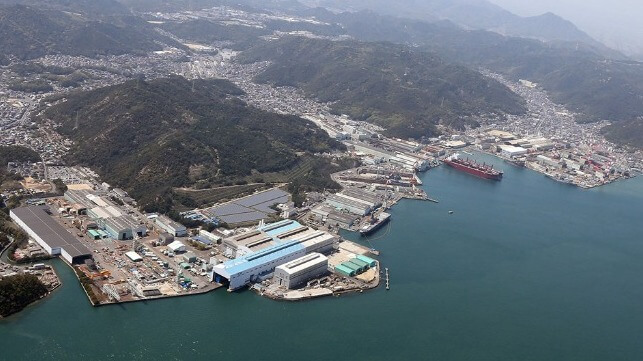Slow Orders for New Bulkers Mean Deliveries Could Reach 19-Year Low

The orderbook for new dry bulk carriers is at the lowest ratio of orders to existing tonnage since at least 1996 reports BIMCO in a new analysis of the market. The industry trade group predicts that based on current orders, deliveries of bulkers could hit a 19-year low in 2024 adding further pressure to what is already a firming market.
“The continued economic downturn will likely affect investment decisions and keep the orderbook small,” predicts Filipe Gouveia in the analysis of the dry bulk shipping market. However, he also reports, “Amid stricter environmental regulations and an aging fleet, renewal of the fleet will be required, and we can expect contracting to pick up across all segments towards the end of 2023.”
Orders for the construction of new bulk carriers spiked in 2021 BIMCO reports. They calculate that the total orderbook reached 48.4 million dwt, “driven by a positive congestion driven cycle which brought an opportunity for investment.” The same port congestion factors that impacted container shipping also reached other segments while the commodities transported by bulkers remained in strong demand. The market was, of course, impacted by the five-month blockage of Ukraine’s ports but rebounded after the UN-brokered agreement to resume grain shipments. For example, the Joint Coordination Center in Istanbul overseeing the inspection of bulkers reported on November 20 that there was a total of 105 bulkers waiting for inspection, including 75 vessels in Turkish waters waiting for approval to proceed to Ukraine.
While contracting for bulkers rebounded in the second half of 2022, BIMCO reports it has not translated into a strong increase in the orderbook for new vessels. “In the first ten months of 2022 only 11.7 million dwt were contracted as concerns about economic growth and alternative fuels dominated the sector,” says BIMCO.
As a result, BIMCO calculates that the total orderbook for dry bulk carriers adds up to 66.7 million dwt, “a mere 6.9 percent of the bulker fleet.” BIMCO reports this is the lowest ratio since at least 1996 and as a result forecasts that deliveries of bulk carriers should drop to 23.8 million dwt in 2024.
In terms of vessel size, BIMCO’s analysis shows that the upcoming bulk carrier deliveries are increasingly skewed toward Panamax and Supramax ships. Capesizes they calculate will account for around 27.8 percent of deliveries in 2024, significantly lower than their 40.9 percent ten-year average. Weaker and volatile rates and a 0.6 ratio between prices for newbuildings and 5-year-old ships are hindering contracting in the segment reports the trade group.
While the current order level is low, BIMCO, however, highlights several elements that they believe will contribute to a rebound in orders. They calculate that the average bulk carrier age has risen by six months each year since 2018 with the average age of bulkers now at eleven years and six months.
They also point to a slow response by the sector to fuel transition and emissions reduction. Measured in deadweight, they calculate that only 13.3 percent of the new vessels will be equipped to operate on LNG, while only 6.0 percent of deliveries until the end of 2024 will be ammonia ready.
BIMCO believes it is only a temporary slowdown. Driven by demand and the need to begin to address the fuel transition, orders for new dry bulk carriers should grow by late 2023. However, they point out that it means alternative fuel adoption among bulk carriers will likely continue to lag behind other sectors due to the current slowdown in orders and the lag time in new construction.
